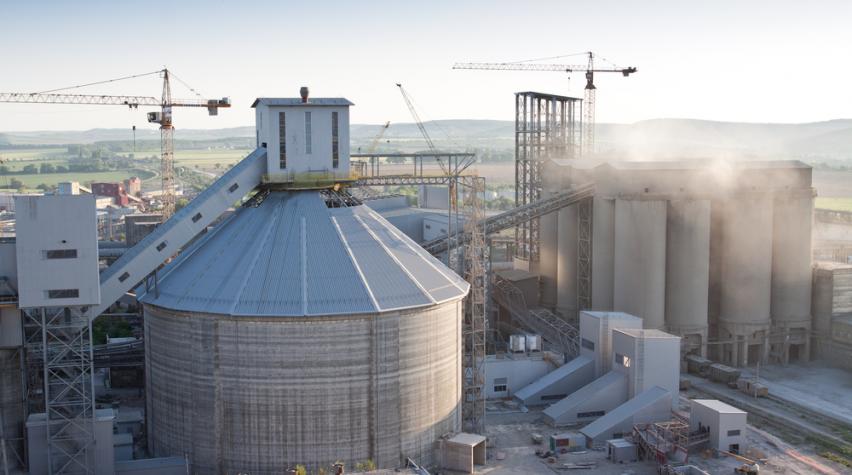
Imagine a technology that could capture atmospheric carbon dioxide, reduce carbon dioxide emissions, reduce the alkalinity of industrial waste, and generate useful materials — all in one process. You don’t need a vivid imagination to envision this scenario. The National Energy Technology Laboratory (NETL) and other research labs have already developed technologies referred to as accelerated carbonation or carbon mineralization that do all of those things.
Accelerated carbonation is a technique to sequester large amounts of carbon dioxide as carbonates, often by reacting CO2 with silicate minerals in aqueous solutions or with industrial waste streams that contain calcium or magnesium. The magnesium and calcium carbonates produced by this reaction are thermodynamically stable solids that could be used as construction materials or in other applications. The technology has been gaining popularity.
Two accelerated carbonation methods
The two methods for performing carbonation are in situ and ex situ mineral carbonation. In situ mineral carbonation involves injecting CO2 into geologic formations containing minerals such as olivine (Mg2SiO4 or Fe2SiO4), wollastonite (CaSiO3), and serpentine (Mg3Si2O5(OH)4). The geothermal gradient, pressure of the CO2, and groundwater present provide the necessary conditions for carbonation to occur naturally over time. This method has the potential to sequester on the order of thousands of gigatons (Gt) of carbon per year.
Conversely, ex situ mineral carbonation takes place in controlled engineered environments. The CO2 is mixed with highly reactive industrial alkaline waste that has a high concentration of calcium and/or magnesium, such as coal flyash, steel and stainless steel slag, waste cement, lime kiln dust, or red mud. Because there is far less of these types of waste than natural minerals available, only about 200–300 megatons (Mt) of carbon is sequestered annually using this method. Ex situ mineral carbonation has additional advantages over the in situ alternative, including reducing the alkalinity of the feed wastes and producing materials that can be used in construction. Alkaline industrial waste such as mine tailings, which contain calcium and magnesium, could benefit from ex situ accelerated carbonation.
Carbon mineralization could benefit large emitters
The cement industry and the construction industry are large emitters of carbon dioxide and could benefit from carbon mineralization to reduce their waste output and carbon footprint. In their position paper, “Electrochemical Conversion of CO2 — Opportunities and Challenges, Research and Innovation,” researchers N. Sridhar and D. Hill state that by using carbonates in 10% of building materials, carbon emissions can be reduced by 1.6 Gt/yr. However, mechanical properties, long-term environmental safety, and net reduction in carbon emissions should be considered when deciding whether to use carbonates as a material of construction.
In addition to reducing the alkalinity of the wastes, carbonation can make industrial wastes safer by immobilizing chromium and other toxic heavy metals, depending on the chemical composition of the waste. For various types and amounts of toxic heavy metals, different chemical conditions are required for immobilization.
Accelerated carbonation research aims to optimize reaction conditions, including temperature, pressure, and reaction time. Researchers must possess a fundamental understanding of the chemistries behind the CO2-to-carbonates conversion reaction, such as the formation of boundary layers containing silicon and iron that limit mass transfer and the effect of impurities like sulfur dioxide in the gas streams. Energy requirements for preprocessing materials, cost, feedstock availability, electricity vs. heat as an energy source, and conversion routes still require more research to advance accelerated carbonation technology.
Learn more through CEI
AIChE’s Center for Energy Initiatives (CEI) is encouraging discussion and knowledge sharing among researchers in this field through its Accelerated Carbonation for Environmental and Material Engineering (ACEME) conference series. ACEME conferences aim to promote research and development activities related to accelerated carbonation at an international level by serving as a forum for discussion on future development and implementation in the field. Processing conditions, product properties, and (online) analysis at the lab, pilot, and full scales are the major themes of the conferences. The last ACEME conference was held in 2015 in New York, NY, and plans for the next ACEME conference in New Castle, Australia, are underway.
This piece appears in the March 2017 issue of CEP magazine. AIChE members receive full online access to CEP, including a searchable archive of issues dating back to 2001.


Comments
A nice article. As a matter of fact there are a few more comments to be made: The next ACEME conference will be in from 11 until 14th March indeed in NewCastle NSW. This is indeed a highly specialised conference about this topic. Still a rather small field (about 5 to 10 universities) in varies topics. And very slowly some companies are moving towards this: -- residual material, like fly-ashes, bottom ashes etc. Carbon8 will be building their 3rd full scale plant this year. -- concrete curing. I.e. Solidia, CarbonCure. -- ore as an input: Mineral Carbonation International and our company. In the report of Global CO2 initiative are market sizes (and value) given: https://assets.contentful.com/xg0gv1arhdr3/5VPLtRFY3YAIasum6oYkaU/48b0f48e32d6f468d71cd80dbd451a3a/CBPI_Roadmap_Executive_Summary_Nov_2016_web.pdf Best regards, Pol Knops Green Minerals